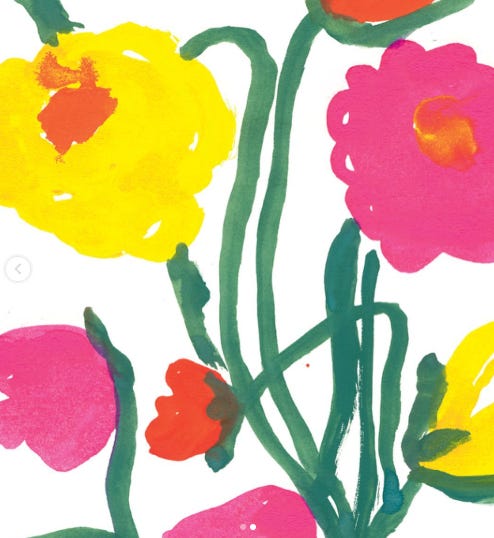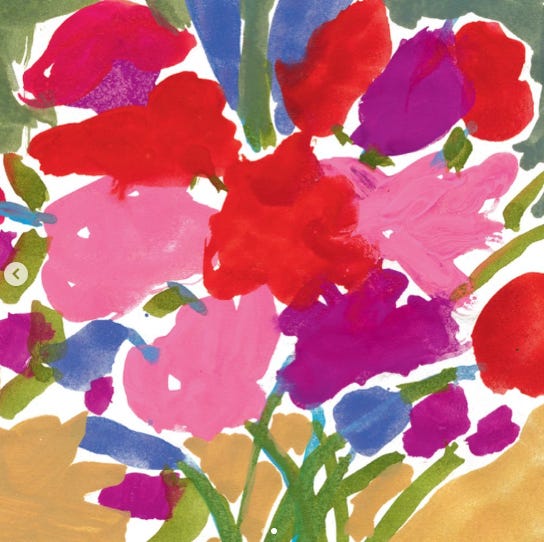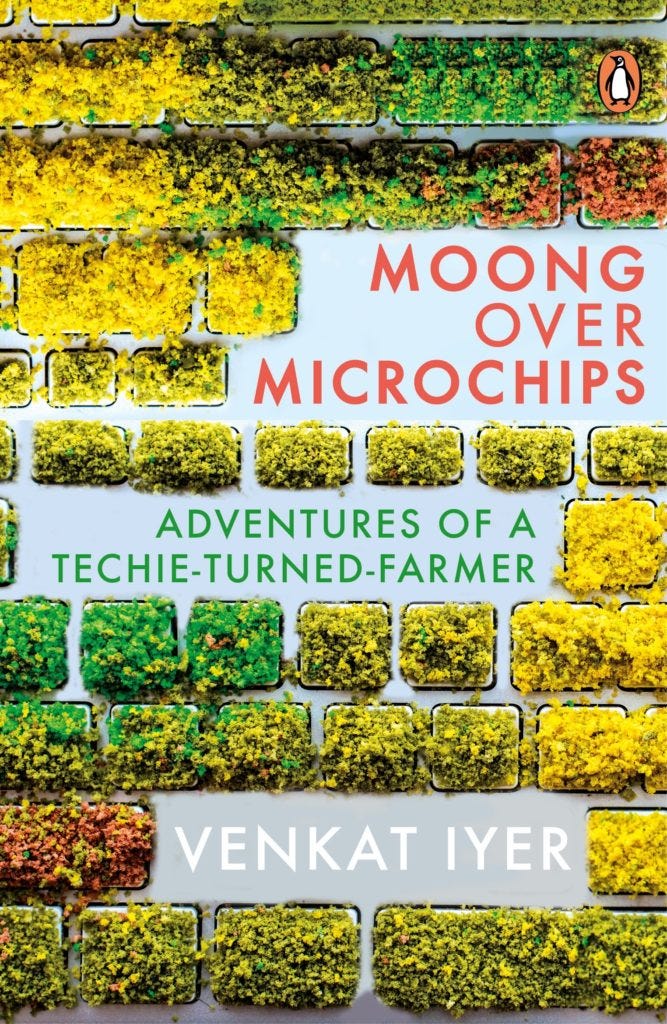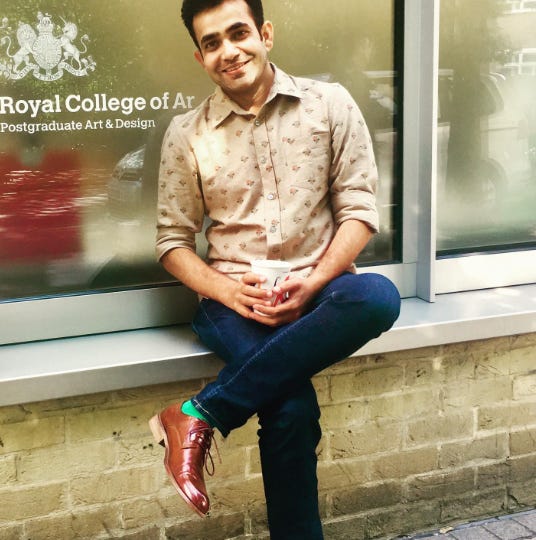Ahlawat Gunjan: The Designer Who Finds Beauty in Slow Living
In the vibrant world of book design, Ahlawat Gunjan stands as a name synonymous with artistic precision and evocative storytelling. With an illustrious career spanning over two decades, Ahlawat has carved a niche for himself as a designer, artist, and now an author, whose works transcend the boundaries of traditional aesthetics and global sensibilities.
Ahlawat’s journey into design began at the prestigious National Institute of Design (NID) in Ahmedabad, where he cultivated his passion for visual storytelling. His quest for excellence led him to the Glasgow School of Art in the UK, where he pursued a master’s in graphic design, honing his craft further. His academic path included stints at Indiana-Purdue University, USA, and apprenticeships with design stalwarts at Lars Müller Publishers in Switzerland and Faber & Faber in the UK, cementing his global perspective on the art of design.
As the Head of Design at Penguin Random House India, Ahlawat played a pivotal role in shaping the visual personalities of some of the most celebrated authors of our time. His portfolio is a testament to his unparalleled ability to distill complex narratives into captivating book covers. , Ahlawat’s work consistently balanced aesthetic sensibility with cultural context. His collaborations extended beyond India to global publishing powerhouses such as Knopf Doubleday, Yale University Press, Harvard University Press, HarperCollins Australia and Faber & Faber showcasing his versatility and global appeal.
Despite his success in publishing, Ahlawat’s creative spirit has always been expansive. Currently pursuing an MA in Interior Design at the Royal College of Art in London, he continues to evolve as a multidisciplinary artist. Moreover, in his free time, he immerses himself in painting, a pursuit that reflects his deep connection to nature and his philosophy of mindfulness.
This philosophy takes center stage in his latest endeavor as an author with the book Slow is Beautiful: The Ultimate Art Journal for Mindful Living Through Nature. Published by Penguin Random House India, the book is a beautifully crafted guide that invites readers to slow down, observe, and create. Through sixty prompts paired with Ahlawat’s evocative watercolor illustrations, the book encourages introspection, creativity, and an appreciation of the natural world. More than just an art journal,
Slow is Beautiful is a call to embrace imperfection and find joy in the process of creation—a philosophy that aligns seamlessly with the mindful ethos of its creator.
As Ahlawat transitions from a designer of stories to a storyteller himself, his work continues to inspire slowing down in a world that moves too fast. In the following conversation, he delves into his creative process, the philosophy behind his book, and how his multifaceted career has shaped his artistic vision.
Excerpts from the Interview :
Q1) Slow is Beautiful is your first book that came out during Covid 2021. It still feels so relevant as it encourages mindfulness and a deeper connection with yourself through art. Can you share what inspired you to create this unique artistic experience for the audiences?
Ahlawat : Like most part of my life, it feels like an accidental book on one level and at another it feels it has been brewing in me for years. It was the first Covid lockdown when work slowed down tremendously and I found myself at our family home near Meerut. After many years of corporate hustle, this slow pace felt like a breather fresh air. It offered time to sit, reflect/introspect work, life, friends and more. With so much chaos, anxiety and sadness due to pandemic, coupled with a personal loss of a dear friend, I took respite in nature through long walks, and it felt there were hidden clues in the nature. I started to compare how nature addresses all aspects of love, life and loss and I felt very beautiful about it. There were life lessons hidden all around, but it was the slowness of the time that allowed me to form that lost bond again with nature. It offered a renewed vision. Upon returning home, I would make drawings of what I saw and write what I felt. It was all very personal and mostly in abstract sketchy forms. In one of my catchups with my publisher Meru Gokhale, I shared this and she was instantly interested. This is how it all started. We started building on it, but nowhere I thought it would turn into a book one distant day.
Slow is Beautiful is a mindful and artful conversation with nature. It invites and offers ways of seeing than ways of looking through the lens of nature. Prioritizing emotions and feelings over any formal technique, it takes an intuitive approach to slow down, to observe and absorb, in this age of visual bombardment. Through this book, I could bring in the designer, painter and author in me on the same plane. With my learnings from art and design background, I could share them in a more structured and narrative form with the world to discover.
I'm not surprised that it's not relevant today, as many of us still haven't learnt our lessons from Covid and are back to square one!
Q2) In a world saturated with visual stimuli, how do you personally practice mindful seeing, and how does it influence your creative process? Could you also elaborate on how slowing down enhances our ability to observe and appreciate our surroundings?
Ahlawat: First step is the acknowledgement that there is so much visual pollution with unbearable AQI, and more than half is unnecessary (including things, friends, unnecessary worries you possess and much more). Once you have understood and taken the first step of filtration, you are now left with limited and quality stuff to focus on. With this limited focus layered with slowness, one is able to connect with oneself profoundly and deeply. Think of a moving train and a walk and just compare the visuals of the two! Don’t you see things more intently and clearly at slow pace.
This is the state where I observe every minute detail.
And I do this consistently, routinely, habitually and constantly to change my way of looking to ways of seeing. As for me, former is passive and later is active! This is oxygen/detox for me I suppose.
Q3) Letting go of familiarity is another key aspect you mentioned. Can you share an experience where observing something familiar with fresh eyes led to a surprising and delightful discovery?
Ahlawat: Familiarity can dull one’s senses, but if you observe with fresh eyes, you see power in the most mundane things. One looks harder and more intently at everything, whether it is a tree, a person, a feeling or a train journey. The long walks I mentioned during the lockdown in the nature allowed me to connect and capture surroundings afresh in small doses, just by noticing them mindfully (geometry, symmetry, patterning of the flowers, fruits, vegetables, shrubs and many unnoticed plants).
Even in relationships. We get so close to the person that it becomes difficult to see them from a distance. You tend to feel you know them inside out, but that may not be true at all.
You get the perspective!
Q4) You emphasize that there is no right or wrong way of creating art. How can individuals embrace their unique artistic voice and style, even if it does not conform to traditional norms?
Ahlawat: Absolutely!! I strongly believe we all are born with creative cells in our bodies. Some of us channelize it, some don’t. Creating art is all about finding your own visual voice, like your own handwriting and it will always be unique to you, and one must embrace it. The noise of the outer world shouldn't affect you, as everyone speaks from their own position in the world or life, informed by their respective experiences and perspectives. Who defines if realistic or abstract is better than the other! It is what it speaks to you most honestly and resonates deeply. There aren't any strict rules to it, apart from originality in thought and execution of it.
Q5) Many readers aspire to embark on their creative journeys. Can you offer some practical advice on how to begin, suspend judgments, and cultivate creative expression?
Ahlawat: To me, it's all about finding your visual voice. More you do, the better you understand and firmer is your ability to argue with yourself. Once you have convinced yourself, you wouldn't be looking for validation outside. Having said that, it comes after years and years of meditative practice, observing others, falling and failing to be better than yesterday, but never from ego or comparison.
Q6) You draw parallels between practicing art and learning to write. Could you elaborate on how repetition and muscle memory play a role in artistic expression?
Ahlawat: At the beginning copying helps. Think of all great Masters, even they used to copy and repeat to understand the anatomy of human body, tree, flower etc. When children learn to write, they go over and over an alphabet/number to understand the structure, an inherent skeleton before plunging into writing words. With this in mind, art is no different to me. At the end, it's neither about repetition nor copying but to sharpen your ways of observing and absorbing. And my book Slow is Beautiful exactly celebrates this phenomenon.
Q7) Creativity often involves using unconventional tools. Can you share an example of a time when you created something remarkable using unexpected materials or tools?
Ahlawat: More than unconventional tools or material, the thinking process has to be conventional with layers of courage, originality and relevance. No idea is a bad idea to start with. Cover design for Moong Over Microchip is one such fitting example here. I actually saw the paddy fields from the flight and then next day my keyboard on the desk. My mind married the two to come up with an unusual and bespoke image for the cover. As designers, it's not always about the tools and techniques, we need to be genuinely curious and interested in the world around us, as answers may lie in simple things around you. Just need a curious mind and a sharp eye!
Q8) From creating art for your journal to designing book covers at Penguin Random House is a unique journey. How do you approach the creative process differently for these two mediums?
Ahlawat: Both are extremely different to me. While creating my journal/book, I was giving visual personality to my own words and all the critique, internal dialogue felt like a monologue, for good and bad. Sometimes it felt really lonely.
But when I'm working on a cover for an author, I have a written brief to work with, with inputs from various stakeholders. Here, I'm trying to get into an author's shoes to understand their perspective on the narrative and by becoming, I'm attempting to offer visual solutions. This process includes lots of conversation with stakeholders, as you are providing design service here.
Q9) As a book cover designer, you can impact the way readers perceive a story. How do you ensure your designs do justice to the narrative and evoke the right emotions?
Ahlawat: True! Book cover is the face of the book and before you interact with an author's work, you actually interact with a cover designer's work. And that in my view, possesses such a responsibility on the book cover designer at many levels. Therefore, visually communicating the book's contents in a strong and clear way are two non-negotiable aspects for me. In doing so, if you have managed to reel in the prospective buyer or reader interest to come closer and pick the book, then it's a job done successfully. Of Course, aspects of aesthetics, saleability and handability etc. all come together in support.
A book cover designer understands that the author’s work is linear but the images on the cover are associative. The challenge is to add layers through visual intervention with type and image. That means, apart from giving a structure, a designer can control the reader to read the content in a certain way. In other words, the designer holds a remote control to direct the reader a certain way and can offer the correct message in one visual (that is the cover).
Spines of books play a pivotal role as well, and designers must pay heed to that aspect. Because of the decreasing shelf space, a month after the book is out, a retailer places it vertically on the shelf, where all one can see is the one-two inch spine. However, it should still speak to the reader. It is a modest but important component, as it can showcase the essence of the book, so one must pay great attention to the way we design the book spines.
While it’s all very thrilling to give visual personality to a book, it is also a huge responsibility on the designer's shoulder. Unlike digital design, once printed, a book will exist for decades and decades! So, one needs to be doubly sure in their design considerations.
Q10) You headed the art department at Penguin Random House India for a decade, and have worked with various international publishers, what factors do you consider when conceptualizing and designing book covers that resonate with both the author's vision and the target audience?
Ahlawat: It entirely depends on the subject matter, genre and the target audiences. This forms the primary lattice of design thinking. Some cover briefs offer the possibility of clever design solutions, through type and imagery while some need to be more immediate, more accessible in look and feel. It’s a collective call we all stakeholders take in terms of how we wish to position a book. This is also hugely informed by the tonality of the text. While the appropriateness of the overall visual (including both type and image) is paramount for me, I do strive to find a sweet spot between appropriateness and experimentation. This keeps freshness alive.
Having said that, it’s also your experience and gut to edit/filter all of that into something strikingly appropriate and intellectually elegant. My way is slow, simple and uncluttered, as already there is enough visual pollution both in typography and imaging. Both of these are art and science, and I strive for simplicity.
It’s an absolute bonus if the cover designer is an avid reader. It makes the whole process so much fun, engaging and rewarding at the end. I feel if you have read the book, your arguments, your negotiations will be far more informed and educated.
Q11) Your educational background includes studies at the prestigious National Institute of Design in Ahmedabad and a master's in graphic design from the Glasgow School of Art and now at the Royal College of Arts, London. Can you shed light on how these distinct experiences differed from each other and their significance in your journey as a book cover designer? In your opinion, how crucial is formal training or mentorship in the realm of creating book covers?
Ahlawat: I have to admit that I have been terribly fortunate to be part of these great institutions! I did my bachelor’s at the National Institute of Design in 2002 and it gave me a solid foundation in Design, an understanding what rigor is, what entails quality, confidence and above all the designerly curiosity.
I was left with a few unanswered questions (purely because of my introverted personality with no fault of NID) and wanted to scratch the design surface further and hence went on to do my master’s at The Glasgow School of Design in 2010. This was such a therapeutic experience – full of design philosophy, amazing tutors who instill courage to take risks, to fail, to fall and have the conviction in what you do. I truly feel privileged for having those experiences, and the kind of individuals I met on the journey.
While accidents are beautiful for me, I believe it’s good to know some rules of the game (if not all) to enjoy being in it. Formal education does offer design theories and principles, a trained pair of eyes, a sane head to think objectively, a heart full of courage and above all how to differentiate between design and decoration. However, it is totally up to you what you make out of them.
Q12) When embarking on the design of a book cover, could you walk us through your typical approach upon receiving a new brief? Does this creative process commence while the manuscript is still in development? Furthermore, what level of involvement do authors and editors have in shaping the cover's design?
Ahlawat: As a process, a designer receives a detailed cover brief from the editor, with inputs from Sales and the author. This brief also has all the book-related specifications (size, format PB/HB, pub month, page extent, and budget). The process for every cover varies, depending on if it’s fiction or nonfiction and the genre. As a rule for myself, I read all the fiction titles to get to the heart of the story, into the skin of the characters and then while reading, visual themes start emerging. Sometimes I start my research on the side, and sometimes after finishing the book. A lot of work happens in parallel, as while reading the manuscript, I may be going back and forth with the editor and the author. I love conversations, as it helps me align everyone’s visual vision cohesively without losing my creating soul.
There are visual suggestions for the cover from the editor, but everyone is always open to anything unusual or new. I see the merits of involving my stakeholders in the design process. I like involving my editor and author very much in the process of designing, as I’m a firm believer that Design is a collaborative process and cannot happen in isolation. Not necessarily asking for approval on colors and fonts, but to discuss and arrive at a collective vision and the central message the book should deliver. Since you are giving visual personality to an author's years of work, involving them not only feels respectful, but necessary in my view.
However, as a designer, it’s your experience and gut to edit/filter all of that into something strikingly appropriate and intellectually elegant. My way is slow, simple and uncluttered, as already there is enough visual pollution both in typography and imaging. Both of these are art and science, and one should strive for simplicity.
It’s an absolute bonus if the cover designer is an avid reader. It makes the whole process so much fun, engaging and rewarding at the end. I feel if you have read the book, your arguments, your negotiations will be far more informed and educated.
Q13) Your portfolio encompasses a diverse range of genres, from novels to historical fiction, fantasy, poetry, and anthologies of short stories. Is there a particular genre you find particularly intriguing or are keen on exploring further in your cover design work?
Ahlawat: I’m most excited about literary fiction, and historical non-fiction. As Arundhati says: A novel offers freedom, but with responsibility. Fiction allows you that extra edge to imagination, creativity, to do more. To think more. To be more.
Q14) Additionally, when commissioning covers to illustrators, can you elaborate on the collaborative nature of this process?
Ahlawat: A designer must prepare a clear illustration brief, with examples for the illustrators to push and pull from. One could have a detailed discussion with the illustrator round the brief (as I always do) and once we both are on the same page, one must request a pencil rough from the illustrator. You are walking a very fine line while commissioning an artwork (due to time, budget, expectations, revisions etc), so one must try to share the rough with the author, editor and Sales. Once everyone has approved the rough and larger vision for the final piece is sealed, a designer can give green light to the illustrator to go full throttle.
Q15) Experience and intuition are vital in the creative process. Can you describe a project where your intuition played a significant role in shaping the final design, perhaps even surprising you or the author with its outcome?
Ahlawat: Indeed. The most beautiful example that comes to my mind is a recent book by the brilliant Ranjit Hoskote the Homeland's an Ocean. Ranjit shared a beautiful miniature painting which captured the essence of the book in all objectivity. I did create the cover options using this painting but wasn't hugely convinced. He is such an amazing author to work with and so receptive to suggestions and feedback. His openness allowed me to pick the phone and share the truth with him. I offered if I could take a typographical take as I could actually see the cover in my mind's eye, and he was instantly sold. After a few exchanges, the final cover is what we all see on the shelves. Simple, appropriate and economical in its beauty and elegance! The cover feels like this jewel sitting on the bookshelves.
Q16) Lastly, can you share any upcoming projects or design philosophies you are excited about in your personal artistic endeavors?
Ahlawat: At 40, I decided to reinvent myself and have enrolled in another Masters (in Interior Design) at the Royal College of Art, London. I'm always interested in the interdisciplinary nature of design and intersections it can offer. At this point, I'm interested in exploring ways of living and doing things in sustainable ways. Therefore, looking at repurposing, reusing and reducing from a designerly lens are some of the key philosophies I'm swearing to! I have always been against consumerism and capitalism, but this time in the most urgent ways.
Thank you all for reading and a big thanks to Ahlawat Gunjan for collaborating in today’s post!
Photograph Credits: Nitesh [https://www.instagram.com/nimo_obscura/]
For those curious to delve deeper into Ahlawat Gunjan’s fascinating journey and explore the essence of his creative world, I encourage you to follow the links below. They offer a gateway to his artistry, philosophy, and the stories he brings to life.
Website: https://www.ahlawatgunjan.com/
Instagram: https://www.instagram.com/ahlawat.gunjan/
LinkedIn: https://www.linkedin.com/in/ahlawat-gunjan-8b866015/
Ted Talk:






















